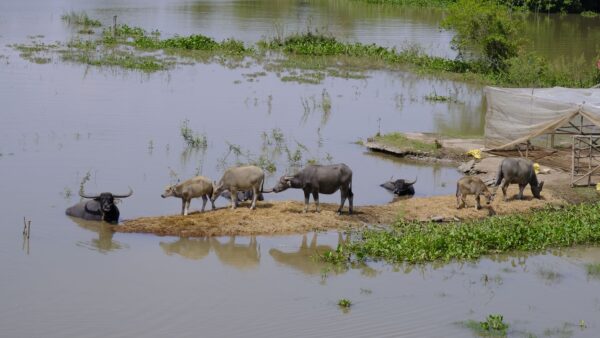Chau Doc City, which is a small city with around 106 square km, and 165.000 people, nestled in the An Giang Province of Vietnam, serves as a fascinating intersection of diverse cultures, thriving aquatic life, and rich culinary traditions, especially during the flood season. This annual phenomenon transforms the landscape, enriching the lives of local communities, including both Vietnamese and Cham peoples, who have adapted their lifestyles to the rhythmic patterns of the Mekong River. The flood season, spanning typically from August to November, offers a unique lens through which to observe the harmonious relationship between humans and nature.
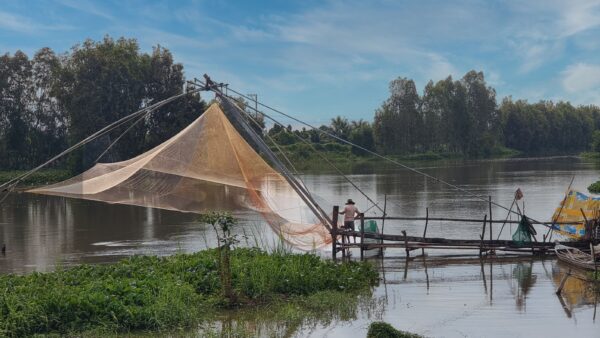
Local Vietnamese and Cham Peoples: Life Along the River in Flood Season
The flood season in Chau Doc City marks a time of cultural flourishing and communal adaptation. The local Vietnamese and the Cham people, an ethnic minority with rich Islamic heritage, share this riverine environment.
During this time, the Mekong River brings families together in search of food. The riverside buzzes with activity as boats laden with goods float by, and traders barter for fresh produce and fish. With agricultural fields submerged, the community shifts from rice farming to fishing and foraging, recognizing the river as a vital resource.
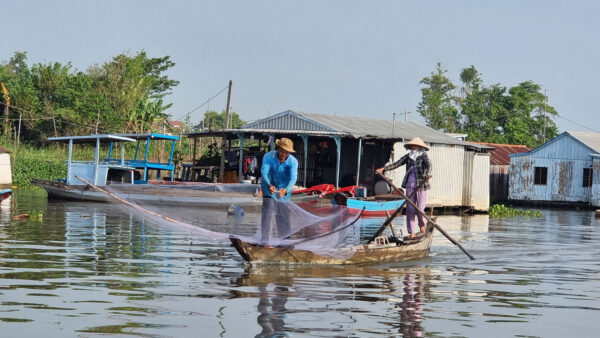
The Cham people, with their unique customs and artisanal skills, engage deeply with the river. Their culture revolves around fishing, weaving, and maintaining a symbiotic relationship with nature. The emergence of various aquatic plants during the flood season provides both food and materials for traditional crafts. Cham artisans, known for their craftsmanship in textiles and pottery, utilize water resources to create items that reflect their cultural identity, demonstrating their adaptability and resourcefulness.
The interplay between the Vietnamese and Cham communities underlines a broader narrative of coexistence and mutual support, showcasing how cultural diversity enhances the vibrancy of Chau Doc City’s flood season.
The Art of Fishing in Flood Season: Techniques and Tools
Within Chau Doc’s inundated landscapes, fishermen embrace the flood season as an opportunity to hone their skills and connect with age-old traditions. The rivers teem with life, offering various fish species that thrive in the natural cycles of the Mekong. Traditional techniques remain prevalent, with fish nets and traps serving as the primary tools for local fishermen.

Using handmade nets, these fishermen exhibit a remarkable symmetry of skill and patience. The practice often involves family units working together, casting nets into the flowing waters and skillfully maneuvering to capture fish with minimal loss. The netting process is not just a means of survival; it embodies a generational transfer of knowledge that has deep roots in the local culture. Fishermen recount storied family genealogies, often steeped in tales of storms weathered and bountiful catches, each resonating with the profound bond between their community and the river.
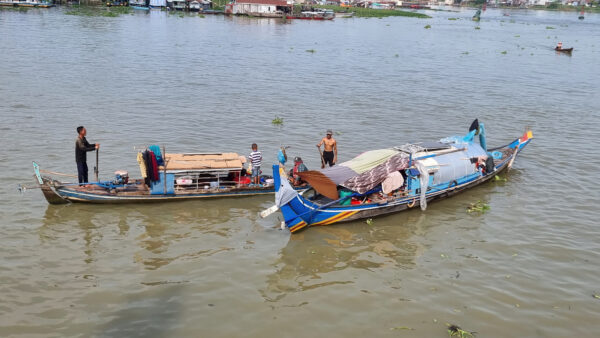
In addition to nets, fish traps, known locally as ‘bẫy cá,’ are ingeniously designed structures crafted from bamboo and natural materials. These traps rely on the behavior of fish, utilizing their natural movements during the flooding to ensnare them effectively. This method of fishing allows families to gather food reserves that sustain them through the seasons, illustrating the ingenuity of local fishing practices.

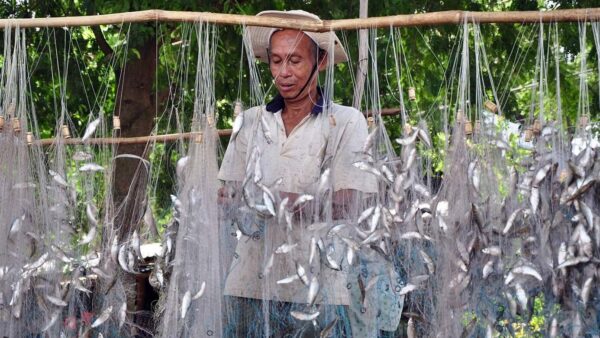
As fishermen haul in their catches, the riverside bustle transforms into a scene of celebration, where fish are cleaned, prepared, and shared among families and neighbors. Not only do these activities provide sustenance, but they also serve as vibrant community gatherings where stories of the day’s catch are exchanged, further weaving communal ties.
Culinary Delights: Sesbania Sesban and Water Lily Dishes
The culmination of the flood season’s bounty finds its expression in the culinary traditions of Chau Doc City. The rivers teem with not only fish but also an abundance of vegetation, particularly sesbania sesban, often referred to as ‘flowers of the water,’ and the graceful water lily. Both plants play a pivotal role in the local gastronomic scene, enhancing both flavor profiles and nutritional value in various dishes.
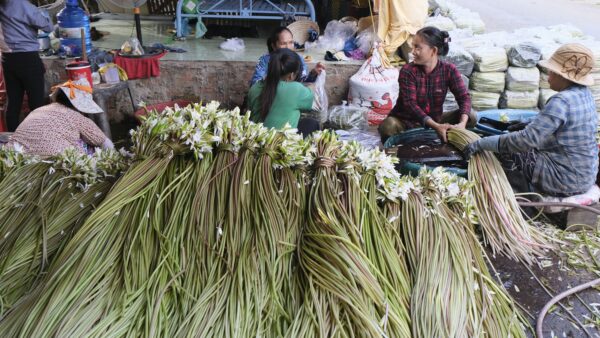
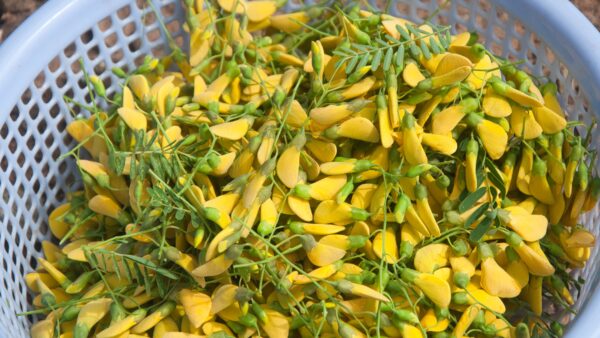
Sesbania sesban is known for its vibrant flowers, often featured in traditional Vietnamese cuisine. The tender blossoms can be steamed, sautéed, or added to sour soups and salads, providing a flavor reminiscent of green beans with a hint of sweetness. A popular dish is ‘Bún Cá,’ a delicate soup with these blossoms and freshwater fish, showcasing the seasonal bond between the river and the table.
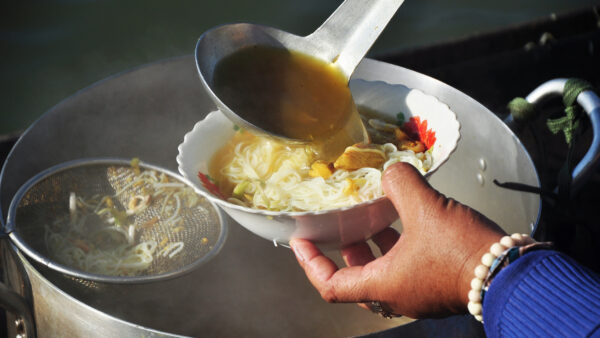
Water lilies also play a significant role in the local diet. Their nutrient-rich roots and stems are harvested for various dishes. One favorite is ‘gỏi bông súng,’ a salad that combines crisp water lily stems with shrimp, herbs, and a tangy dressing. This dish highlights flood season’s fresh produce and emphasizes sustainability by utilizing accessible resources.
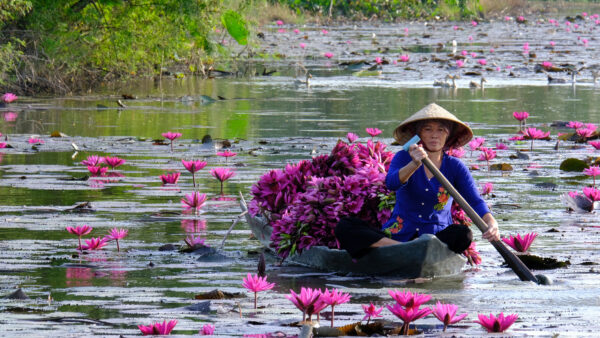
The culinary practices surrounding these plants demonstrate a deep understanding of the local environment. Vibrant local markets, filled with fresh produce and seafood, create a sensory experience that attracts residents and tourists, especially during lunar festivals.
Chau Doc City’s flood season embodies a rich tapestry of life, culture, and tradition. The river is vital for both Vietnamese and Cham communities, supporting fishing, foraging, and cultural practices. Fishermen’s artisanal techniques reflect their knowledge of the river, while the culinary use of sesbania sesban and water lilies signifies the region’s connection to its natural resources.

